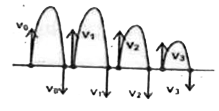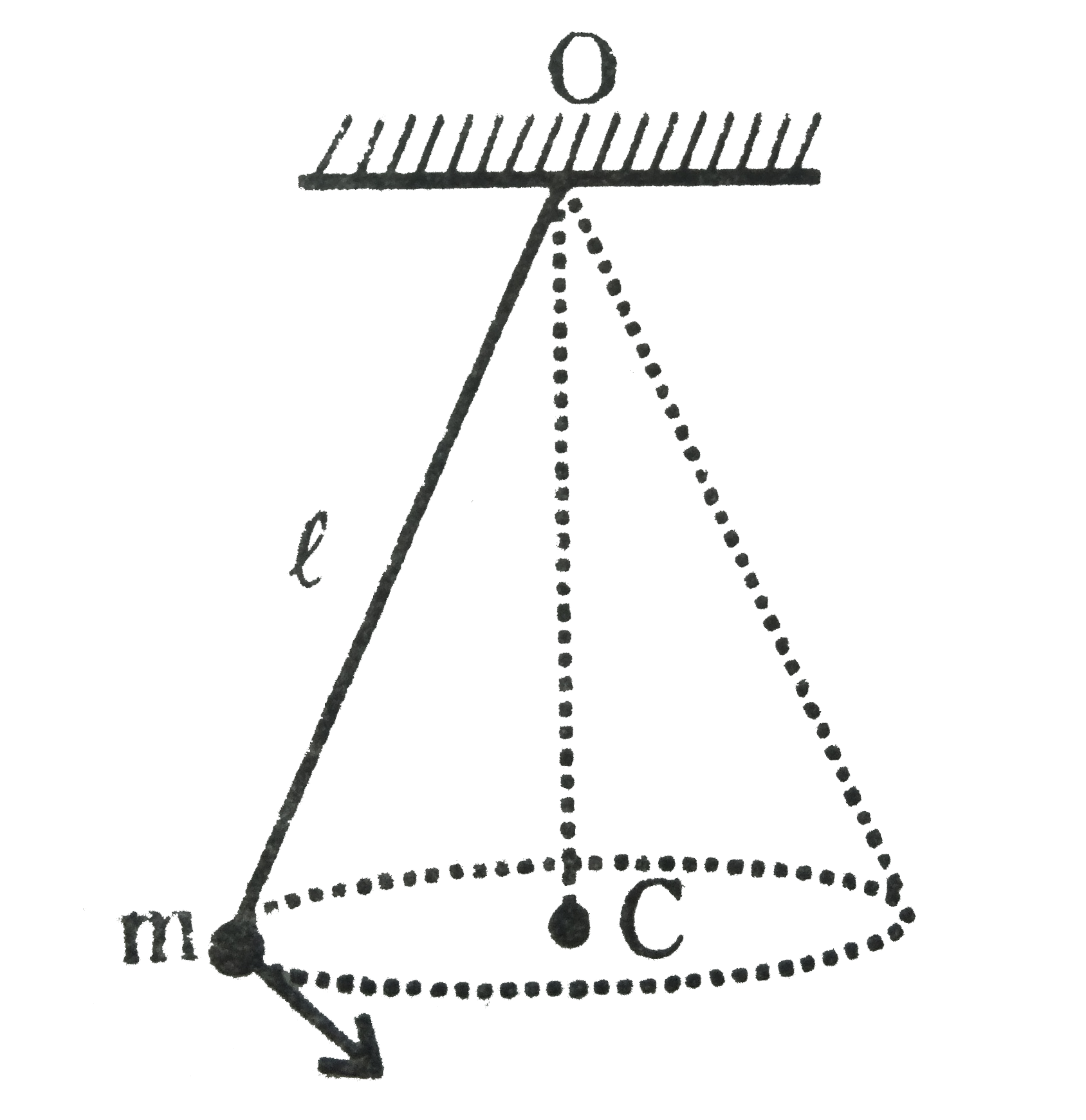A ball of mass m falls down without initial velocity from a height h over the Earth's surface. Find the increment of the ball's angular momentum vector picked up during the time of falling (relative to the point O of the reference frame moving translationally in a horizontal direction with a velocity V). The ball starts falling from the point O. The air drag is to be neglected.
During the free fall time t=τ=√2hg, the reference point O moves in horizontal direction (say towards right) by the distance Vτ. In the translating frame as →M(O)=0, so
Δ→M=→Mf=→r
=(−Vτ→i+h→j)×m[>au→j−V→j]
=−mVgτ2→h+mVh(+→k)
=−mVg(2hg)→k+mVh(+→k)=−mVh→k
Hence ∣∣Δ→M∣∣=mVh

Topper's Solved these Questions
- BOOK - IE IRODOV, LA SENA & SS KROTOVCHAPTER - PHYSICAL FUNDAMENTALS OF MECHANICSEXERCISE - Universal Gravitation34videos
PHYSICAL FUNDAMENTALS OF MECHANICS
- BOOK - IE IRODOV, LA SENA & SS KROTOVCHAPTER - PHYSICAL FUNDAMENTALS OF MECHANICSEXERCISE - Dynamics Of A Solid Body56videos
PHYSICAL FUNDAMENTALS OF MECHANICS
- BOOK - IE IRODOV, LA SENA & SS KROTOVCHAPTER - PHYSICAL FUNDAMENTALS OF MECHANICSEXERCISE - The Fundamental Equation Of Dynamics59videos
PHYSICAL FUNDAMENTALS OF MECHANICS
- BOOK - IE IRODOV, LA SENA & SS KROTOVCHAPTER - OSCILLATIONS AND WAVESEXERCISE - Electromagnetic Waves, Radiation36videos
OSCILLATIONS AND WAVES
- BOOK - IE IRODOV, LA SENA & SS KROTOVCHAPTER - THERMODYNAMICS AND MOLECULAR PHYSICSEXERCISE - Transport Phenomena38videos
THERMODYNAMICS AND MOLECULAR PHYSICS
Similar Questions
A stone falls down without initial velocity from a height h onto the Earth's surface. The air drag assumed to be negligible, the stone hits the ground with velocity v0=√2gh relative to the Earth. Obtain the same formula in terms of the reference frame "falling" to the Earth with a constant velocity v0.
View SolutionA ball of mass m is thrown at an angle α to the horizontal with the initial velocity v0. Find the time dependence of the magnitude of the ball's angular momentum vector relative to the point from which the ball is thrown. Find the angular momentum M at the highest point of the trajectory if m=130g, α=45∘, and v0=25m/s. The air drag is to be neglected.
View Solution
Knowledge Check
- Question 1 - Select One
A ball of mass m falls vertically to the ground from a height h1 and rebound to a height h2. The change in momentum of the ball on striking the ground is.
Amg(h1−h2)Bm(√2gh1+√gh2)Cm√2g(h1+h2)Dm√2g(h1+h2) - Question 2 - Select One
A ball of mass m falls vertically to the ground from a height h1 and rebound to a height h1 and rebound to a height h2. The change in momentum of the ball on striking the ground is.
Amg(h1−h2)Bm(√2gh1+√2gh2)Cm√2g(h1+h2)Dm√2g(h1+h2) - Question 3 - Select One or More
A block of mass m moves on a horizontal rough surface with initial velocity v. The height of the centre of mass of the block is h from the surface. Consider a point A on the surface.
Aangular momentum about A is mvh initiallyBthe velocity of the block decreases at time passes.Ctorque of the forces acting on block is zero about ADangular momentum is not conserved about A.
A ball of relative density 0.8 falls into water from a height of 2 m. find the depth to which the ball will sink (neglect viscous forces)
View SolutionA ball of mass m is projected vertically up from a smooth horizontal floor with a speed v. Find the total momentum delivered by the ball to the surface during impact assuming e as the cofficient of restitution of impact.
 View Solution
View Solution.A ball is projected upwards from a height h above the surface of the earth with velocity v .The time at which the ball strikes the ground is
View SolutionA small ball of mass m suspended from the celling at a point O by a thread of length l moves along a horizontal circle with a constant angular velocity ω.
 .View Solution
.View SolutionA ball is projected vertically down with an initial velocity from a height of 20m onto a horizontal floor. During the impact it loses 50% of its energy and rebounds to the same height. The initial velocity of its projection is
View Solution
